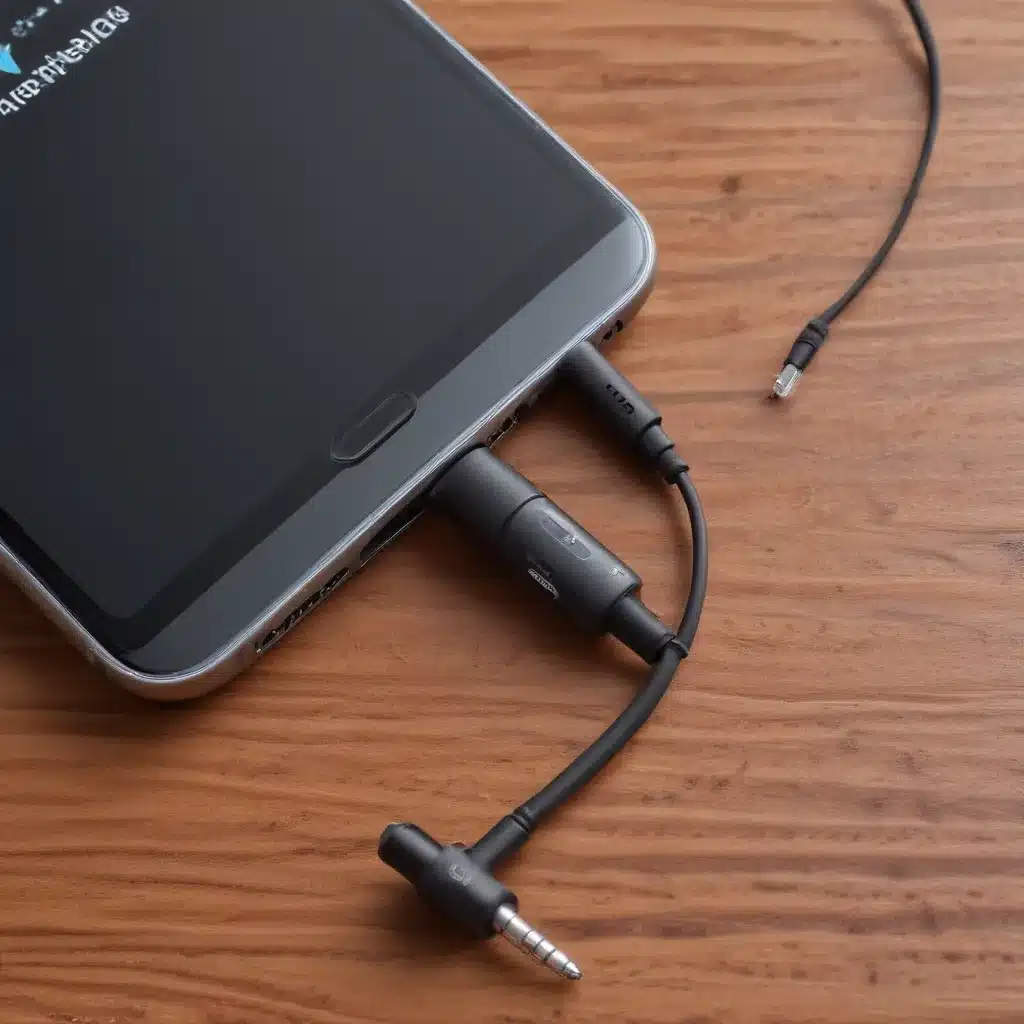
The Diminishing Headphone Jack
I remember when the headphone jack was a ubiquitous feature on smartphones. It was a simple, reliable way to connect our favorite headphones and enjoy our music, podcasts, and other audio content on the go. However, in recent years, this once-standard port has started to disappear from many new phone models.
Smartphone manufacturers have cited various reasons for this trend, such as the need to optimize internal space, improve water resistance, and embrace wireless audio technologies. While these arguments may have some merit, the lack of a headphone jack can be a significant inconvenience for many users who have invested in wired headphones or prefer the reliability and audio quality of a direct connection.
As someone who values the flexibility and versatility of wired audio, I’ve been on a mission to find a solution to this problem. Fortunately, there is a way to add a headphone jack to your phone, even if it doesn’t come with one out of the box. The key lies in utilizing the USB-C port, which has become the new standard for charging and data transfer on many modern smartphones.
Introducing USB-C Audio
USB-C is a versatile port that can do much more than just charge your device. It can also carry high-quality audio signals, allowing you to connect your wired headphones or speakers directly to your phone. This technology is known as USB-C audio, and it offers several benefits over traditional headphone jacks.
One of the primary advantages of USB-C audio is the potential for improved sound quality. The digital nature of the audio signal transmitted through the USB-C port can result in a cleaner, more accurate reproduction of your audio compared to the analog signals of a traditional headphone jack. This can be especially beneficial for audiophiles or those who value high-fidelity sound.
Additionally, USB-C audio can support advanced features like active noise cancellation, digital signal processing, and even the ability to drive high-impedance headphones that may have been difficult to power from a standard headphone jack. This opens up new possibilities for enhancing your listening experience.
Choosing the Right USB-C Audio Adapter
To take advantage of USB-C audio, you’ll need to invest in a compatible adapter or dongle. These devices come in a variety of shapes, sizes, and feature sets, so it’s important to do your research and choose one that meets your specific needs.
When selecting a USB-C audio adapter, consider the following factors:
- Audio Quality: Look for adapters that support high-resolution audio codecs, such as LPCM, DSD, or MQA, to ensure you’re getting the best possible sound quality.
- Connectivity Options: Decide whether you need a simple pass-through adapter for charging and audio, or if you’d like additional features like USB-C power delivery, multiple audio outputs, or even built-in DACs and amplifiers.
- Compatibility: Make sure the adapter is compatible with your specific phone model and its USB-C implementation. Some adapters may not work with certain devices due to software or hardware incompatibilities.
- Design and Durability: Consider the physical design of the adapter, including its size, weight, and cable length, to ensure it fits your needs and lifestyle. Also, look for adapters made of high-quality materials that can withstand everyday use.
Upgrading Your Audio Experience
Once you’ve found the right USB-C audio adapter, the process of adding a headphone jack to your phone is relatively straightforward. Simply plug the adapter into your phone’s USB-C port, and you’re ready to connect your wired headphones or speakers.
One of the great things about this approach is the flexibility it provides. You can choose to use the adapter only when you need it, allowing you to take advantage of your phone’s built-in features when you don’t require wired audio. This can be particularly useful when you’re traveling light or want to minimize the number of accessories you’re carrying.
Moreover, the USB-C audio adapter can serve as a convenient way to charge your phone while listening to audio. Many adapters come with a pass-through charging feature, allowing you to keep your device powered up while enjoying your music or podcasts.
Exploring the Possibilities
With a USB-C audio adapter, the possibilities for enhancing your audio experience on your smartphone are endless. You can experiment with different headphones and speakers, trying out new brands, models, and technologies to find the perfect fit for your listening preferences.
Perhaps you’ll discover a pair of high-end, noise-cancelling headphones that transport you to a new level of audio immersion. Or maybe you’ll uncover a versatile Bluetooth speaker that allows you to share your music with friends and family, even in environments where a wired connection isn’t practical.
The key is to approach this journey with an open mind and a willingness to explore. By embracing the flexibility and capabilities of USB-C audio, you can unlock a world of enhanced audio opportunities that may have been previously unavailable on your smartphone.
Conclusion
As the headphone jack continues to disappear from modern smartphones, it’s essential to have a solution that allows us to maintain our preferred audio experience. Fortunately, USB-C audio adapters provide a simple and effective way to add a headphone jack to our devices, enabling us to connect our wired headphones and speakers with ease.
By considering the various factors, such as audio quality, connectivity options, and compatibility, we can find the right USB-C audio adapter that meets our specific needs and preferences. This, in turn, can help us upgrade our audio experience, explore new possibilities, and ensure that we never have to compromise on the way we enjoy our music, podcasts, and other audio content on the go.
So, if you’re someone who values the convenience and reliability of wired audio, I encourage you to explore the world of USB-C audio adapters. It’s a simple and effective solution that can breathe new life into your smartphone’s audio capabilities and help you reclaim the joy of a headphone jack.












